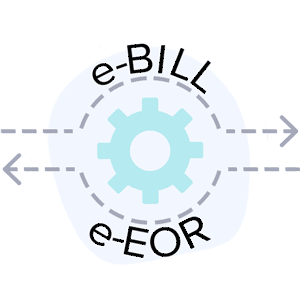Billing Tip: Know Where to Send RFAs

The first thing we tell a provider when they ask for workers’ compensation billing tips? Always, always, always submit a Request for Authorization (RFA) for the recommended treatment. RFAs are the single best five-minute investment a practice can make, because authorized treatment guarantees payment.
Beyond that, treating physicians are required to submit compliant RFAs.[1] Yet, many physicians do not take the time to submit the official DWC Form RFA. Still others are unsure of where and how to submit the form. We often hear from providers who submit their RFAs along with their bills; in reality, this can lead to long delays in processing – or no processing at all.
The reason for this comes down to a difference in how RFAs and bills are processed – while both are regulated by the Division of Workers’ Compensation (DWC), they each have specific submission guidelines.
All RFAs are processed through a program called utilization review, or UR. Per California Labor Code section 4610 , claims administrators are required to establish a utilization review program, which is responsible for timely determining whether a physician’s proposed course of treatment is “medically necessary.”[2] So that physicians know where to send their Requests for Authorization, claims administrators are also required to provide an RFA fax number under California Code of Regulations § 9792.9.1.[3]
Different types of RFAs fall under different Utilization Review timelines – we broke these down on the blog last week. Only once utilization review approves a Request for Authorization may a provider proceed with treatment secure in the knowledge that they will be reimbursed.
Unfortunately, things get complicated when it comes to determining how to correctly route RFAs. While every claims administrator is required to furnish providers with fax information for the claims administrator’s Utilization Review program, that information can be notoriously tough to track down. Furthermore, different claims administrators espouse wildly different practices when it comes to UR.
A random sampling of California claims administrators underscores this point. For example, Gallagher Bassett requires providers to fax RFAs directly to their UR program at a designated number. Zurich, conversely, wants RFAs faxed to the handling adjuster. Meanwhile, State Compensation Insurance Fund has at least fourteen different fax numbers for RFAs, each corresponding to a different handling office across the state. Before faxing an RFA, providers must first call State Fund to determine the correct handling office.
In the end, it’s just one more thing to worry about in the labyrinthine workers’ comp billing system – and some providers simply don’t have the time, wherewithal, or knowledge of state regulations and requirements to blaze their own investigative trail. Instead, they submit their RFAs with their bills. But bills are processed through an entirely separate program called Bill Review. Sending a Request for Authorization straight to Bill Review is a little like sending a faulty car engine to a body shop. Whoever ends up receiving it probably won’t quite know what to do with it.
That’s why daisyBill’s electronic billing software keeps track of critical contact information for every claims administrator in California, including the fax numbers for RFAs. What’s more, we’re adding a new tool to the Work Comp Wizard and Essential Toolbox with the same information. Determining where to send RFAs can – and should – be simple. Then again, we feel that way about workers’ comp billing in general.
To see our Claims Administrator Profile in action, click the link below and schedule a demo with one of our billing experts.
Request Demo
DaisyBill provides content as an insightful service to its readers and clients. It does not offer legal advice and cannot guarantee the accuracy or suitability of its content for a particular purpose.



